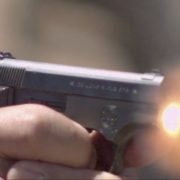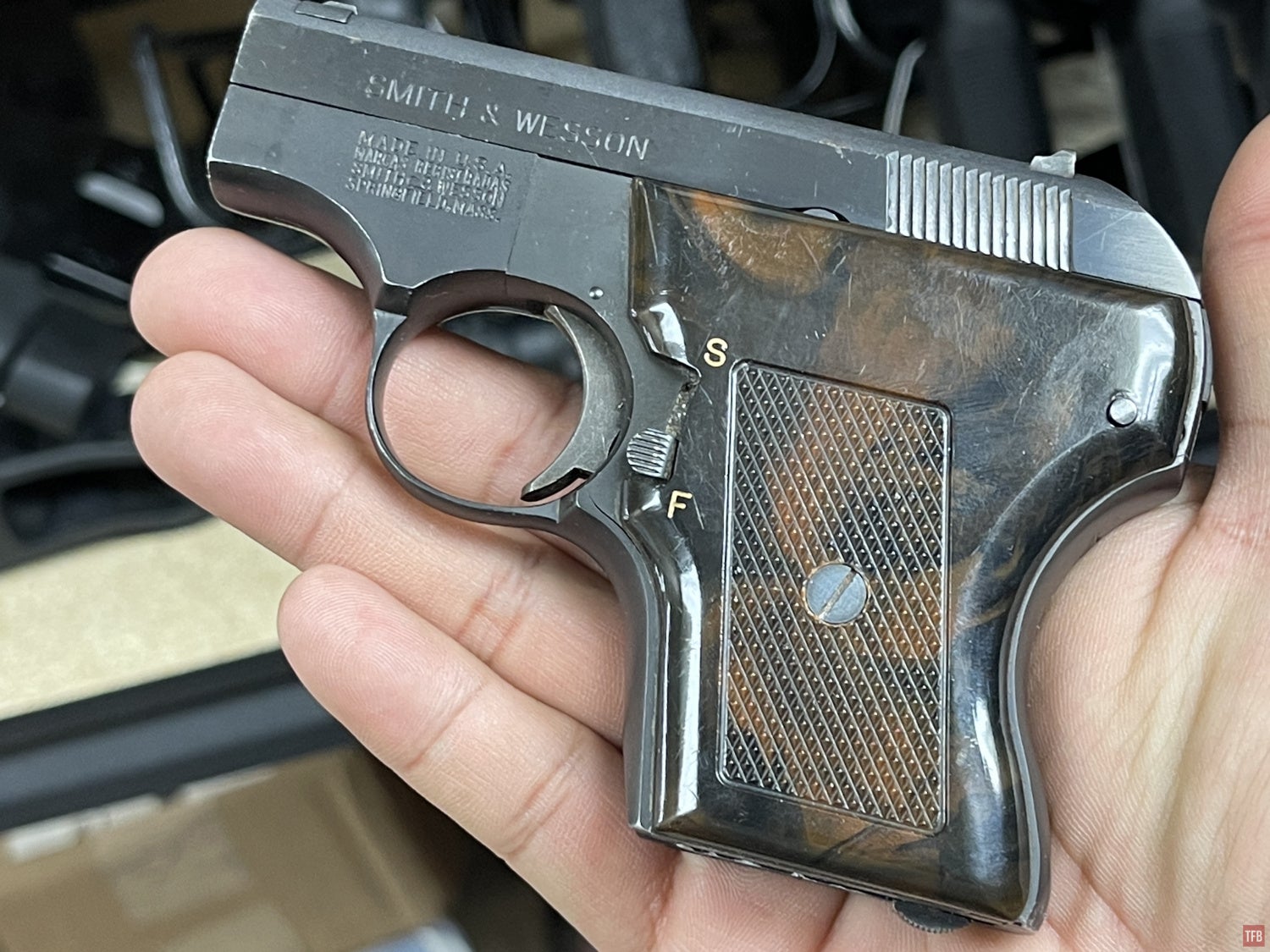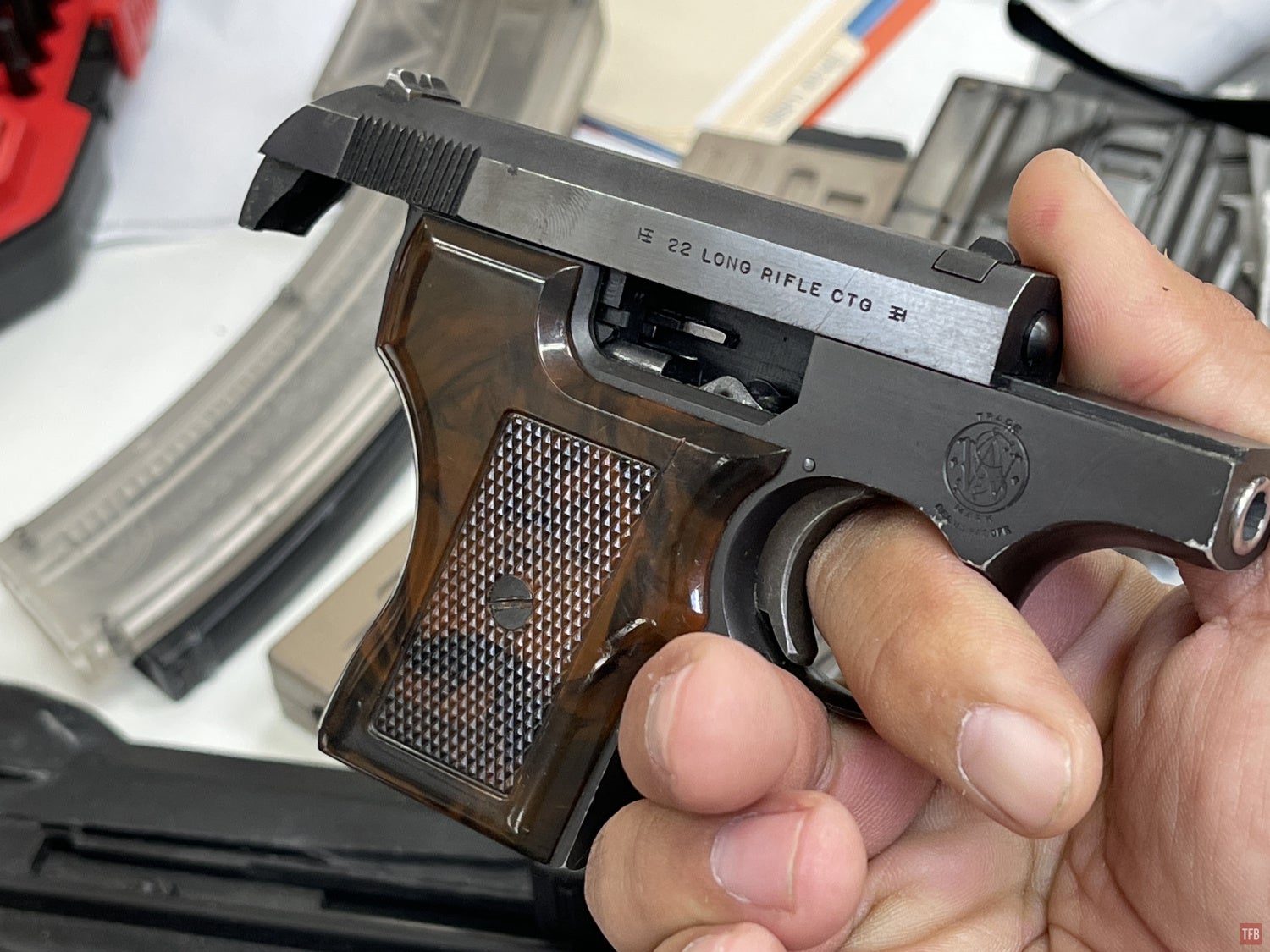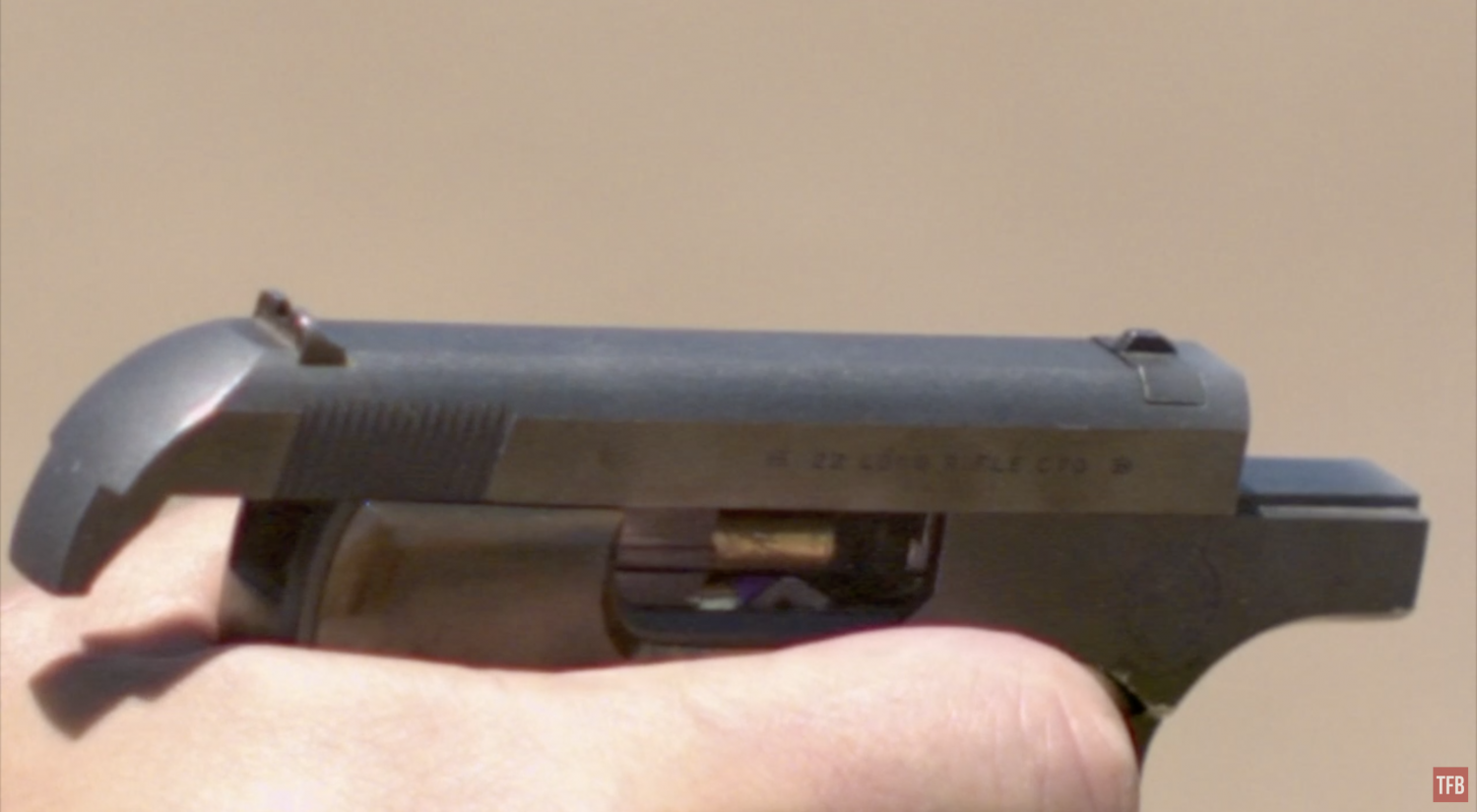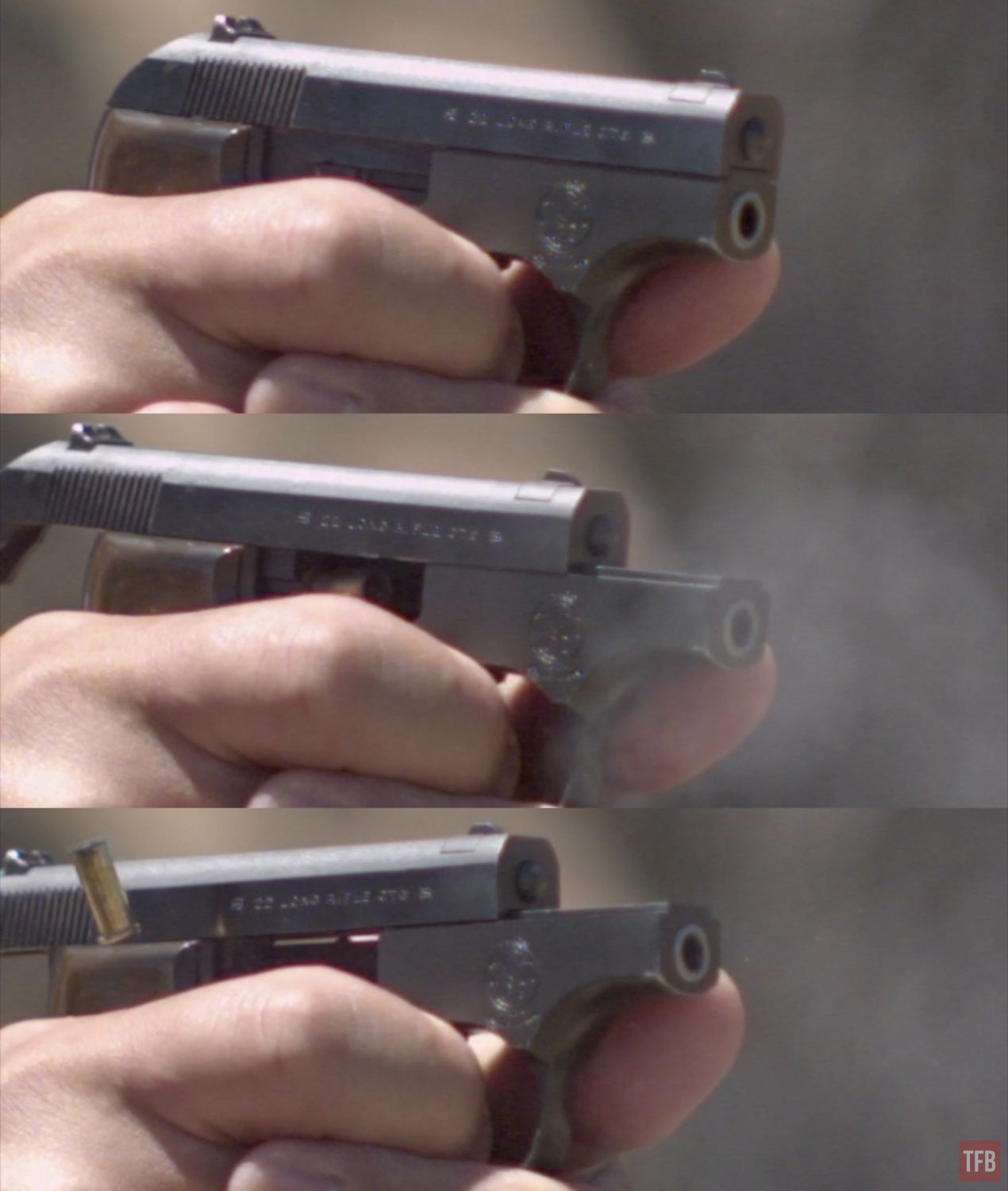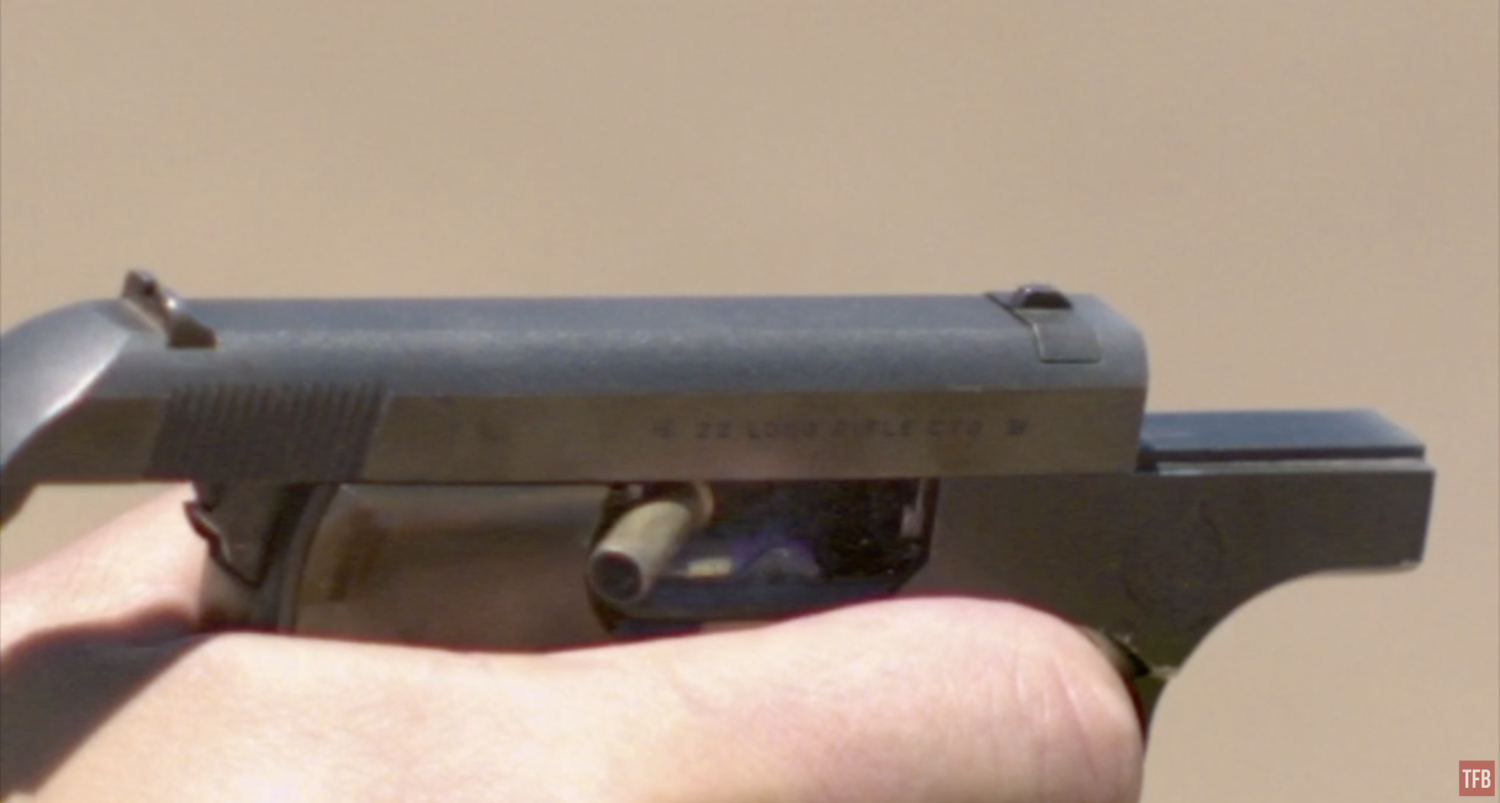I recently picked up a S&W Model 61 thanks to my friend Paul. I did not know much about the pistol other than “it is the Taxi Driver sliding pistol”. I was intrigued by the lower bore axis and slide design. Of course, I had to film it in slow motion.
.22LR pistols @ TFB:
- The Rimfire Report: Walther WMP 22WMR Pistol Review
- [NRAAM 2022] Colt’s New King Cobra Target .22LR Revolver
- The Rimfire Report: The SIG P322 – 10,000 Rounds Later
The Model 61 slide design and low bore axis barrel intrigued me.
As I mentioned earlier, I did not know much about the Model 61 so I was unaware of its short-lived production run and its notorious reputation for being unreliable. However, I figured at the bare minimum I could film a malfunction and we could learn a lot. Here is the video I shot.
My friend Jerry was the trigger man while I operated the Chronos 1.4. We got lucky and the Model 61 shot two whole magazines without issue. We used CCI Clean ammunition. You can see the pink-coated bullets for breast cancer awareness.
Due to the slide and breech block design, the slide has a protrusion at the bottom rear. You can see it in the photo above where I pushed the slide back with my thumb. You can see it in the screencap below too. This prevents the shooter from choking up on the frame to lower the barrel more into the hand.
Even though the Model 61 looks like it has a low bore axis, it is not that low due to the design of the frame and slide. However, there is not much recoil from the firing of the .22LR cartridge. It is only when the slide reaches the end of its travel does it cause the Model 61 to climb. The closing of the slide causes muzzle dip and helps to bring the pistol back on target.
I have not seen another Model 61 in person and this one has not malfunctioned yet but I think I might know why it could malfunction from the slow-motion video I shot. Rewatch the second half of the video where I filmed from slightly behind the ejection port. Watch the ejection of the brass. The extractor and ejector seem to be working pretty well but the brass looks like it hits the grip panel on its way out. This takes away some of the energy the brass had to fling out of the ejection port. I have seen similar malfunctions in slow motion by centerfire firearms where they had a failure to eject and often it involved the extractor or the brass hitting something that prevents it from ejecting all the way out.
According to Unblinkingeye.com, this Model 61 is an original with a serial number B76XX. It is not one of the improved revised Model 61s. There will be more slow-motion videos to come of other firearms. I hope you enjoyed this.


